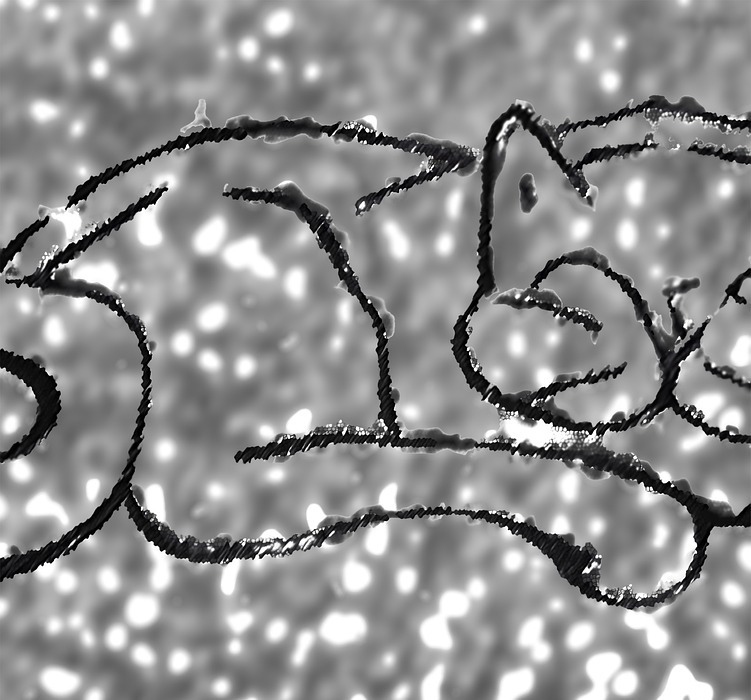The rhythmic rumble of a cat's purr is a familiar sound to many pet owners, but have you ever stopped to wonder how they produce this soothing vibration? The act of purring is more than just a pleasant sound; it's a complex physiological phenomenon with fascinating scientific underpinnings. This article delves into the mechanics of cat purring, exploring the muscles involved, the frequency range, and the potential health benefits associated with this unique vocalization. We will also examine the different theories surrounding the purpose of purring, from a simple communication tool to a self-healing mechanism.
Part 1: The Mechanics of Purring

1.1 The Larynx: The Sound Source
The foundation of purring lies in the larynx, commonly known as the voice box. This structure, located in the throat, houses the vocal cords, which are two folds of elastic tissue that vibrate to produce sound. When a cat breathes in and out, air passes through the larynx, causing the vocal cords to vibrate and produce a sound. However, the sound of a purr is different from other feline vocalizations, such as meows or hisses.
1.2 The Diaphragm: The Driving Force
The diaphragm, a large, dome-shaped muscle located below the lungs, plays a crucial role in respiration and purring. During purring, the diaphragm contracts and relaxes rhythmically, creating a steady airflow that vibrates the vocal cords. This rhythmic contraction and relaxation of the diaphragm is essential for generating the consistent, low-frequency sound of a purr.
1.3 The Vocal Cords: The Vibrating Tissues
The vocal cords themselves are made of elastic tissue that can be stretched and relaxed, changing the pitch of the sound produced. When a cat purrs, the vocal cords oscillate rapidly, generating the low-frequency vibrations characteristic of a purr. The speed and amplitude of these oscillations determine the frequency and intensity of the purring sound.
1.4 The Unique Purring Mechanism
The mechanism behind purring is unique in the animal kingdom. Unlike other animals that produce sound by expelling air from their lungs, cats use a more intricate process involving the coordination of multiple muscles. The rhythmic contraction and relaxation of the diaphragm, coupled with the vibration of the vocal cords, creates a continuous, low-frequency sound that we recognize as a purr.
1.5 The Frequency Spectrum of Purring
The frequency of a cat's purr typically falls between 25 and 150 Hertz (Hz), with most purrs residing around 25-150 Hz. This range is remarkably consistent across different cat breeds and ages. The exact frequency of a cat's purr can vary depending on factors such as the cat's emotional state, size, and even the surrounding environment. For instance, a cat might purr at a higher frequency when excited or anxious, while a lower frequency purr might indicate contentment or relaxation.
1.6 The Mystery of Purring Control
While we know the muscles involved in purring, the precise neurological pathways controlling this behaviour remain somewhat elusive. Research suggests that both the brain stem and the motor cortex play a role, but the exact interplay between these regions is not fully understood. Some studies indicate that the brain stem might be responsible for the rhythmic contractions of the diaphragm, while the motor cortex could control the tension of the vocal cords. However, further research is needed to fully understand the complex neural mechanisms underlying purring.
1.7 Involuntary vs Voluntary Control
Cats appear to have limited voluntary control over purring, suggesting that it is primarily an instinctive response. However, some studies indicate that cats can consciously initiate purring in certain situations. For instance, a cat might purr to attract attention or to solicit a desired action from its owner. The degree to which cats can voluntarily control their purring remains a topic of ongoing scientific investigation.
Part 2: The Purpose of Purring: Theories and Evidence

2.1 Communication: A Signal of Contentment and Well-being
Purring is often seen as a sign of contentment, affection, and trust. Kittens begin purring shortly after birth, possibly as a way to signal their need for attention and nourishment from their mother. This early purring behaviour suggests a strong evolutionary link between purring and communication. The rhythmic vibrations of a purr can have a calming effect on both the cat itself and on humans, contributing to a sense of peace and security.
2.2 Self-Healing: The Potential Therapeutic Benefits of Purring
Research suggests that the low-frequency vibrations of a cat's purr can have analgesic effects, reducing pain and inflammation. This may explain why cats often purr when they are injured or in pain. The frequency range of purring, which overlaps with the frequencies used in some medical therapies, such as vibration therapy, could potentially stimulate healing processes.
2.3 Bone Healing: A Potential Role in Bone Regeneration
Some studies have shown that the vibrations produced by purring may stimulate bone growth and repair, potentially accelerating the healing process after a fracture. The mechanism by which purring might influence bone regeneration is still under investigation, but some researchers believe that the vibrations could stimulate bone cells and promote blood flow to the injured area.
2.4 Muscle Relaxation: Relieving Tension and Stress
The rhythmic vibrations of a purr can help to relax muscles, reducing tension and stress. This could be a contributing factor to the calming effect of a cat's purr. The vibrations of purring might also release endorphins, natural painkillers that contribute to muscle relaxation and pain relief.
2.5 Other Possible Functions of Purring
- Attracting Attention: Kittens may purr to attract their mother's attention, especially when seeking food or warmth.
- Signaling Submission: In some social situations, purring may serve as a signal of submission to a dominant cat.
- Regulating Body Temperature: The vibration of purring could generate heat, potentially aiding in thermoregulation, particularly in cold environments.
Part 3: The Evolution of Purring

3.1 Ancient Origins: A Long Evolutionary History
The evolutionary origins of purring are not definitively known, but it is believed to have emerged early in the evolutionary history of felids. The fact that both domestic cats and some wild cat species purr suggests that this behaviour evolved before the domestication of cats.
3.2 Shared Traits: Purring Across Cat Species
While purring is most commonly associated with domestic cats, some wild cat species, such as the jaguar and the cheetah, are also known to purr. The presence of purring in both domestic and wild cats indicates that this behaviour is likely an ancient trait that has been preserved throughout feline evolution.
3.3 Possible Adaptations: The Benefits of Purring
The potential benefits of purring, such as pain relief and wound healing, may have contributed to its preservation as a beneficial trait throughout feline evolution. These benefits could have provided an evolutionary advantage, increasing the survival rate of cats and making them more adaptable to different environments.
Part 4: Purring: A Window into a Cat's Emotional State
4.1 Interpreting the Meaning of Purrs
The meaning of a cat's purr can vary depending on the context. A purr accompanied by a relaxed posture and slow blinking usually indicates contentment, while a purr paired with a stiff body and narrowed eyes may suggest anxiety or aggression. It's important to consider other behavioural cues, such as tail position, ear movements, and facial expressions, to gain a more complete understanding of your cat's emotional state.
4.2 Deciphering Purring with Body Language
- Relaxed Posture: A cat lying down with its legs stretched out and a soft purr usually indicates contentment and relaxation.
- Slow Blinking: A cat that is purring and slowly blinking its eyes is often a sign of trust and affection.
- Stiff Body: A cat that is purring but has a stiff body and a tense posture may be feeling anxious or stressed.
- Narrowed Eyes: A cat that is purring but has narrowed eyes may be feeling threatened or agitated.
Part 5: Purring and Human-Cat Interactions
5.1 The Therapeutic Power of Purrs
Many people find the sound of a cat's purr to be incredibly soothing and relaxing. The vibrations of a purr have been shown to lower blood pressure and reduce stress levels in humans. The low-frequency vibrations of purring might activate the vagus nerve, which has a calming effect on the body and mind.
5.2 A Bond of Love and Trust
The act of purring helps to strengthen the bond between cats and their human companions, fostering a sense of love and companionship. The rhythmic vibrations of purring create a sense of connection and intimacy, reinforcing the emotional bond between cats and their humans.
5.3 Cat Therapy: The Benefits of Purring for Humans
The therapeutic benefits of purring extend beyond relaxation and stress reduction. Some studies suggest that interacting with cats and listening to their purrs can have positive effects on mental health, reducing symptoms of anxiety and depression.
FAQs
1. Do all cats purr?
While purring is a common behaviour in most cat species, some breeds, such as the Bengal and the Siamese, are known to purr less frequently than others. However, it is important to remember that individual cats within a breed can vary in their purring behaviour.
2. Can cats purr when they are sick or in pain?
Yes, cats can purr even when they are sick or in pain. Some experts believe that purring may be a self-soothing mechanism that helps to alleviate discomfort. However, if a cat is purring excessively or if the purr sounds different than usual, it's important to consult a veterinarian.
3. Can cats purr while they are sleeping?
Yes, cats can purr while they are sleeping. This is often a sign of contentment and relaxation. A sleeping cat that is purring is likely dreaming of delicious treats or chasing feathered toys.
4. Why do cats purr when they are being petted?
Purring when being petted is a common sign of affection and enjoyment. It is a way for cats to show their appreciation for the attention and physical contact. If a cat is purring while being petted, it means they are enjoying the interaction and feeling safe and comfortable.
5. Can cats purr when they are angry or aggressive?
While purring is usually associated with positive emotions, some cats may purr when they are feeling threatened or anxious. This may be a way for them to try to de-escalate the situation. A cat that is purring but also displaying other aggressive behaviours, such as hissing or growling, may be feeling threatened and trying to warn you off.
6. Can cats purr at different frequencies?
Yes, the frequency of a cat's purr can vary depending on the situation. A low-frequency purr is often associated with contentment and relaxation, while a higher-frequency purr may indicate excitement or anxiety.
7. How can I encourage my cat to purr?
You can encourage your cat to purr by providing them with positive reinforcement, such as petting, treats, and praise. Spending quality time with your cat and creating a safe and comfortable environment can also help to promote purring.
8. Is it possible to train a cat to purr on command?
While cats have limited voluntary control over purring, it is unlikely that you can train them to purr on command. However, you can create conditions that encourage them to purr naturally, such as petting them gently or providing them with their favourite treats.
Everyone is watching
-

Are Cat Ribs Flexible? Understanding Their Anatomy
CATS & KITTENSThis article delves into the fascinating world of feline anatomy, exploring the flexibility of cat ribs and ho...
-

Can Cats Eat Bananas? (Everything You Need to Know)
CATS & KITTENSThis article dives into the intriguing question of whether cats can safely enjoy the sweet, yellow fruit, bana...
-

Cat Lifespan: How Long Do Cats Live?
CATS & KITTENSThis comprehensive guide explores the factors influencing the lifespan of our feline companions, providing ins...
-

Can Cats Get COVID-19? What You Need to Know
CATS & KITTENSThis article will delve into the fascinating world of feline COVID-19 susceptibility. We'll explore whether ca...
-

Can Cats Eat Eggs? A Complete Guide to Egg Safety for Your Feline Friend
CATS & KITTENSWhen it comes to treating our furry companions, we all want to ensure we're doing what's best for them. Eggs...
